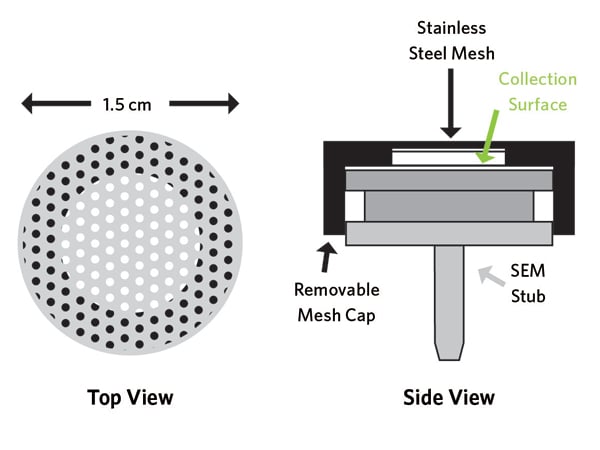UNC Passive Aerosol Sampler
Monitor Air Quality
The UNC passive aerosol sampler obtains particulate concentration and composition information about air quality in both indoor and outdoor environments. The sampler does not need power, so it can be used virtually anywhere that allows evaluation of the spatial distribution of particulate matter. Innovative and cost-effective, it is easily deployed by simply attaching it to readily available objects.
Originally developed to serve as a personal particular monitor in industrial hygiene (IH) applications, the UNC passive aerosol sampler provides particulate concentration data in studies where active samplers are not feasible. The sampler may also be used to complement Federal Reference Method (FRM) particulate samplers by providing spatial distribution data associated with coarse PM10-2.5 particles.
Particulate Concentration Data
TA benefit of the UNC passive aerosol sampler is that it not only provides information on the characteristics of the particulate matter (size and elemental composition), but it provides estimates for ambient concentration as µg/m3 through analysis using computer-controlled scanning electron microscopy (CCSEM) techniques.
The sampler’s ability to provide particulate concentration data (µg/m3) makes it effective for measurements involving PM10, PM2.5, and PM10-2.5 concentrations in ambient environments. Based on the success of the UNC passive aerosol sampler to estimate PM10-2.5 concentration data, the UNC passive aerosol sampler has been used in a number of studies by the U.S. Environmental Protection Agency (EPA) to evaluate the spatial distribution associated with coarse particulate matter (PM10-2.5).

Learn More About the UNC Passive Aerosol Sampler
Ready to learn more about the UNC Passive Aerosol Sampler?

